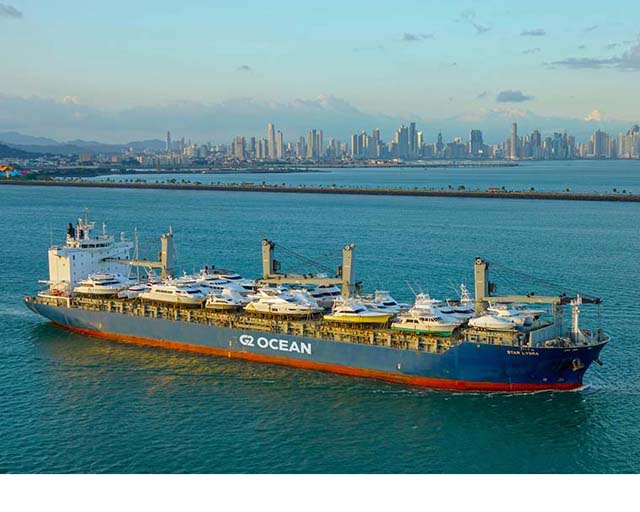An industry partnership led by Grieg Maritime Group and initiated by Norway’s Green Shipping Programme has started a pilot to retrofit an Open Hatch vessel to run on green ammonia.
According to the company, there are several uncertainties on how well ammonia will work for deep-sea shipping. With Grieg Maritime Group taking part in several initiatives on both production and distribution of green ammonia, the group considers it only natural that it should invest in studying the possibilities for deep-sea shipping.
The Norwegian Green Shipping Program initiated the pilot, which has support from the Norwegian Ministry of Climate and Environment. The partners are all key players in the value chain, from cargo owner and leading eucalyptus pulp producer Suzano to Grieg joint venture Open Hatch shipping company G2 Ocean, and including technology companies, insurers, and others. The pilot will include evaluating a business case for green ammonia fuel and whether green ammonia is viable as a fuel for deep-sea shipping. The partners will explore commercial, technical, infrastructure and financial workstreams. Grieg will be the pilot owner, with DNV the pilot facilitator.
While most projects on ammonia are looking at newbuildings, this pilot aims to retrofit one of Grieg’s 8-year-old L-class Open Hatch ships.
Head of Grieg Star, Atle Sommer, said: ”If the shipping world is going to achieve its decarbonising goals, we need to include solutions for the existing fleet and actively and practically address the challenges. We must solve the decarbonisation challenge. We believe in ammonia, so we will investigate how to implement it on board a specific vessel type in one particular trans-Atlantic route with the whole value chain involved. Emission reductions matter the most in deep-sea shipping, and through this pilot, we will be a part of the solution.“
A potential trade route for the vessel is between Europe, the Gulf of Mexico and Brazil, from where partner Suzano ships large amounts of paper and pulp products.
Thiago Oliveira Pereira, Logistics and Shipping Executive Manager, Suzano, said: “Suzano was invited to participate in this project, which aims at reducing the use of petroleum-based products in the international maritime logistics, and we will help to find alternatives to enable this initiative. The purpose of the project is directly connected to Suzano’s goal of reducing the GHG emissions of its own production and of the chains in which it operates.”
As the pilot is a study, no final decision to retrofit will be made at the end. Instead, the pilot will produce a final report, and its key findings will be shared with the rest of the business regardless of conclusion.
The Green Shipping Programme brings more than 100 different players in the Norwegian maritime cluster together with the common goal of establishing the world’s most efficient and environmentally friendly shipping.
Narve Mjøs, CEO Green Shipping Programme, said: “The programme started in 2015. Our focus during the first years was on Norwegian coastal shipping. In continuing the programme, we will also focus on deep-sea shipping. We will contribute to the learning we have gained at home can be utilised abroad. Furthermore, we will facilitate increased competitiveness and development of the Norwegian maritime industry as an international leader. Knowledge sharing has been and will continue to be our way of working for further development.”



